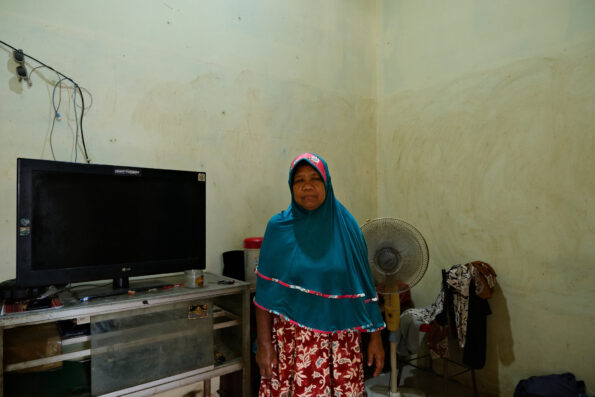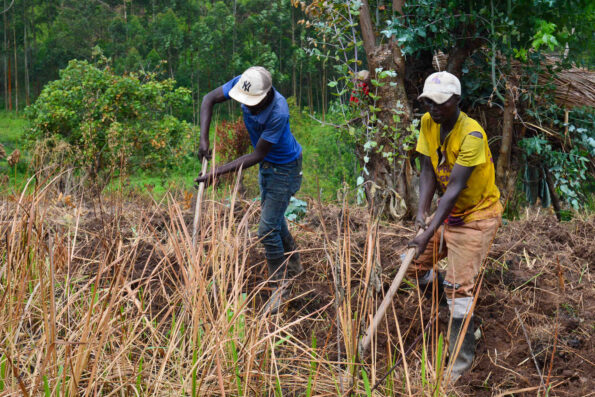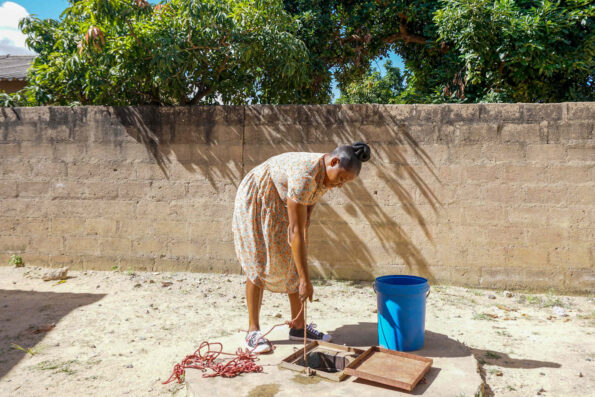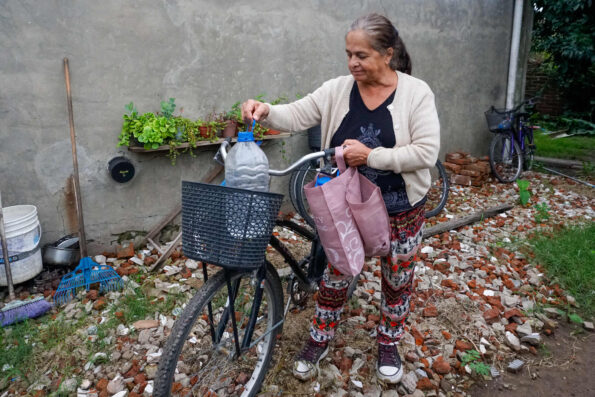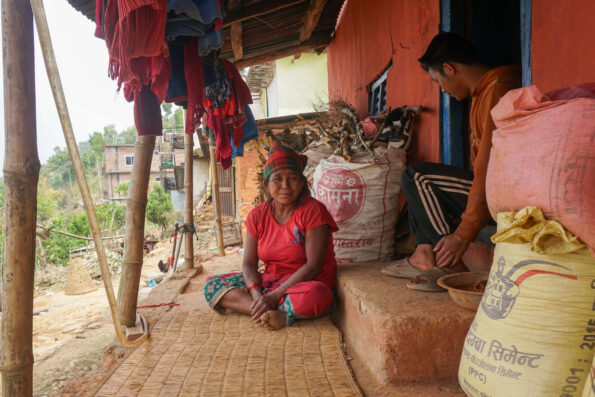
Mar García, GPJ Mexico
Gabriela Vázquez, a researcher and professor at the Universidad Autónoma de México campus Xochimilco in Mexico City, holds an axolotl. The program at the university researches the feeding and reproduction of the lizard-like creatures, which have been listed as critically endangered since 2006.
MEXICO CITY, MEXICO — On the edge of this mega-city, large pools of water covered with a dark net protect axolotls, also known as the Mexican salamander or Mexican walking fish. Thousands of axolotls are bred here as part of a program developed by the Centro de Investigaciones Biológicas y Acuícolas de Cuemanco (CIBAC) in 1994, in what’s considered the heart of an axolotl preservation project.
The species, known for its exposed gills, limbs and long, slim body, was declared critically endangered by the International Union for Conservation of Nature in 2006, years after scientists first noticed that the species’ numbers were shrinking.
Luis Zambrano, a biologist who specializes in axolotl research at the Instituto de Biología at Universidad Nacional Autónoma de México, says axolotls numbered 6,000 per square kilometer in the areas of their natural habitat in 1998. By 2004, those numbers were down to 1,000 per square kilometer. By 2014, he says, numbers had gone down even more.



The open-air breeding ground managed by CIBAC is one of several conservation projects. In 2013, 2,800 axolotls were released in this 200-hectare (494-acre) ecological reserve. In 2015, the Secretaría del Medio Ambiente y Recursos Naturales, the environment and natural resources ministry, released 500 axolotls from CIBAC in the water channels south of Mexico City, 225 of them wearing a chip that monitors their behavior.
This program’s success is only part of what’s needed to save cannibalistic axolotls from extinction. The axolotl’s natural habitat in the lake complex has changed dramatically in recent decades as its water has been used to quench thirsty Mexico City and as predatory fish have been introduced into the system.



Experts say habitat restoration is key to the survival of axolotls. Zambrano’s project monitors four semi-natural lakes known as “axolotl shelters,” which are each home to a male and female axolotl. They are monitored to determine if the conditions are best for conservation of the species. The results gleaned from Zambrano’s research will be used to restore the habitat in the water channels south of Mexico City through a project called “Chinampa Refugio” that also will benefit the area’s floating gardens. The area’s floating gardens will also get a boost from a healthier water system.
The axolotls desperately need natural habitat, Zambrano says. Massive breeding in captivity can reduce a species’ survival instincts and genetic variability.
“Reduced genetic variability becomes a problem in evolutionary terms because it’s the easiest way to extinguish a species,” Zambrano says. “And in behavioral terms [the axolotl in captivity] is like a pet.”
When axolotls come from better habitat, he says, they sell for a higher price.
Even though axolotls are endangered, it is possible to buy them as domestic pets. Some axolotl conservationists say that strategy is part of their conservation efforts.
“A lot of people don’t understand that [their sale] is positive for conservation,” says Arturo Vergara Iglesias, a biologist who manages environmental education activities in the lacustrine area. “Each…specimen that we sell means one less specimen taken illegally, because whoever wants it will buy regardless of its origin.”
It’s illegal to capture a wild axolotl, says Fernando Arana, a biologist who has led CIBAC since 2004, but they’re available for sale if they have a certificate of legal provenance from having been bred in captivity.



New efforts for axolotl preservation are in the works, too.
Gabriela Vázquez, 38, a researcher and professor at the Universidad Autónoma de México campus Xochimilco, says that thanks to CIBAC’s donation of 40 specimens, she has developed research on the food and preservation of the axolotl to generate strategies for its protection. Vázquez’s work, which began in 2014, is done in a laboratory in conditions that, researchers hope, will achieve favorable breeding rates.
“We do it in experimental laboratory conditions and the idea is for it to be carried out at a pilot level [at conservation sites,]” Vázquez says.
Lourdes Medrano, GPJ, translated this article from Spanish.


